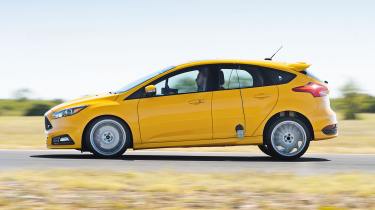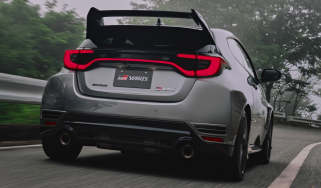The art of the car magazine road test
evo's Richard Meaden recalls his early days of gathering performance data as a road tester

Way back in the dying decade of the last century, performance testing was still a sacred pillar of the UK magazine road test. It was a serious business conducted in secret places. More often than not that meant heading to the sprawling Millbrook Proving Ground in deepest, darkest Bedfordshire. If not there, then some brooding former Cold War airbase, and failing that, a quiet, straight stretch of road near to the road test editor’s house.
When I was a voracious consumer of car magazines rather than a perennial provider of late copy, I imagined road testing to be impossibly cool. When I finally landed my first full-time magazine role on the short-lived Carweek, as a road tester, natch, I was delighted to discover I wasn’t too far from the mark. Especially when it dawned on the 21-year-old me that official access to private industry test facilities was basically endorsed hooning.
Perhaps because I was so in love with the idea of road testing, I also harboured the belief that a seasoned magazine road test editor must be terra firma’s answer to Chuck Yeager. This proved a little fanciful when I discovered he was actually a small, bearded man called John Simister.
‘Simi’ was my mentor and I owe him a great deal. A stickler for process and detail, he schooled me in the arcane rigours of professional road testing, from how to assess and concisely describe a car’s attributes to the fiddly job of fitting the ancient test equipment.
Post fifth wheel but predating today’s GPS, the kit was hub-mounted, with a long umbilical cord connecting the rotating sender to a large black box. This in turn was connected to a small printer that spewed out endless lengths of silver till roll etched with the test figures. It could be an absolute git of a thing, but somehow this fickle contraption made the process of figuring cars seem more scientific. Suckering a Vbox to the windscreen just isn’t the same.
Once back in the office we’d pore over the rolls, calculating averages for all the standing-start and in-gear acceleration runs before writing them in the margins and copying the results across to hand-written performance tables. The rolls would then be consigned to Carweek’s open-cast filing system in Simi’s desk drawer. I suspect he still has them stashed in an old shoe box; a petrolhead treasure trove of tickertape.
We continued the figuring tradition at evo for a while, using Millbrook, MIRA and Bruntingthorpe for the straight-line stuff, and trips to Anglesey, Bedford Autodrome or Blyton Park for lap times. I’m sad to say time pressures, staffing limitations, budget constraints and circuit availability mean old-school empirical testing is now the exception rather than the rule.
I miss it, though to be honest I’m not sure today’s cars lend themselves to the old ways. Not so long ago pretty much every sector of the market would contain a disparate and characterful variety of cars and powertrains. Most needed a slight adjustment in your technique, some a complete change of approach. And yes, sometimes there’d be a loud bang and expensive clattering noises, but that happened far less often than you might imagine.
These days platform sharing and increasingly stringent emissions regs mean almost everything is turbocharged and mated to some kind of automated transmission. Hybrid and EV tech further homogenise the mix, just as launch control has taken the last remaining shred of skill out of the time-honoured emergency start.
There’s also the small fact that most of the things we test at evo are getting too fast for the test facilities. Anything over 150mph around Millbrook’s awesome and surprisingly bumpy two-mile concrete bowl made your palms begin to sweat. Much more than 170 and you’d be whimpering for your mother. Quite how Tiff Needell lapped it at an average of 195mph in a McLaren F1 I will never know. It’s worth a watch (through your fingers) on YouTube.
We might have become numb to 0-60 and 0-100 figures, but those benchmarks only tell a small part of the story. Dig deeper into the data and the black-and-white numbers throw light on the all-important shades of grey. For instance, back in the day, a non-turbo VTEC Civic Type R would nail the standing-start and lap-time tests, but struggle with the in-gear stuff. Conversely, a Mk5 Golf GTI would deliver less sparkling headline stats, but its in-gear tractability gave it brilliant real-world performance.
Being an evo reader you likely know all this, but it’s worth repeating. If only because it might persuade the beneficent Mr Gallagher to let us blow the dust off the Vbox for the mother of all benchmarking sessions, so we can put figures to a gathering of the greatest road and competition cars past and present. Lobbying missives to the usual address.



